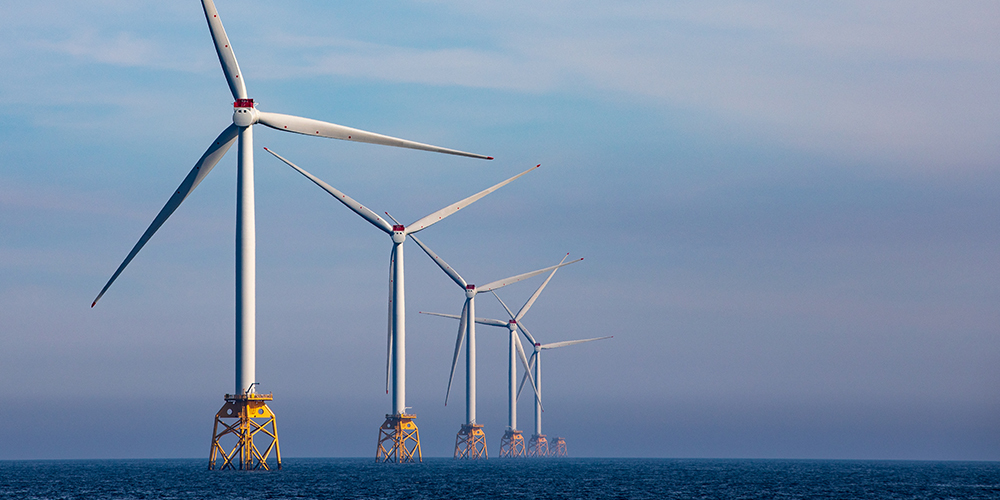SSE’s Q3 trading update hints at a shifting of the gears at the company, as it unveils maiden subsidy-free onshore wind development.
Financially, the company says that these results are in line with its last interim results statement, and continues to expect adjusted Earnings Per Share for 2019/20 to be in the range of 83p to 88p when final results come out in May.
Offshore wind heavily contributed to this, as it continued to grow during the first nine months of the financial year, with the company generating 1,487GWh during the period. This is up from 921GWh during the same period in 2018.
The company’s onshore wind generation fell during the period, which the company suggested was due to weather conditions leading to output of renewable energy for the nine months to 31 December 2019 being just over 5% behind plan. Onshore wind fell from 3,186GWh of generation in 2018 during this period to 3,026GWh last year.
SSE Renewables is developing more onshore wind capacity, having made a final investment decision for the Gordonbush onshore wind farm, which will be the company’s first subsidy-free wind farm.
Announced today (31 January), the farm will be an extension to the 35 turbine strong, 70MW Gordonbush farm north west of Brora in the Scottish Highland. SSE will begin constructing 11 further turbines at the site in March, increasing the installed capacity of by 47MW.
SSE Renewables’ managing director Jim Smith highlighted that onshore wind is the cheapest form of low carbon generation and “brings job and investment to rural communities,” while expressing his concern that construction had fallen to its lowest point in a decade.
“We urge the UK government to ensure onshore wind can be developed at the pace and scale set out by the Committee on Climate Change by providing investors with more certainty over the income they will receive for generating zero-carbon power in the longer term.
“Accelerating onshore wind development would be a quick win for government as it looks to set out plans to meet net zero in the run up to COP26 in Glasgow this year.”
The company currently has 2GW of onshore wind, with over 1GW in development. SSE has said that it is committed to reaching 30TWh of renewable generation by 2030.
This continued focus on wind comes as the company’s Fiddlers Ferry coal-fired plant is due to cease production in March. The company is also working on selling gas production assets, but the transaction will not be completed in FY2019/20.
SSE is no longer a supplier of household energy in the UK, following the acquisition of its Energy Services arm by OVO, which took place on 15 January. The sale cost OVO £500 million, made up of £400 million in cash and £100 million loan notes.
At the time of the acquisition, Alistair Phillips-Davies, CEO of SSE said in a blog post that SSE’s strategic focus had shifted to developing, building and maintaining low carbon assets.
This shift seems to be supported in today’s Q3 trading statement, with SSE’s finance director Gregor Alexander lauding the company’s “strategic execution, good operational performance and optionality”.
“Since reporting our interim results we have continued to deliver on our priorities, focusing the SSE group on businesses that are well placed to play a leading role in delivery of a low-carbon strategy that supports the transition to net zero emissions.
“The first financial objective of that strategy is to remunerate shareholders’ investment through dividends based on the quality and nature of assets and operations, earnings derived from them and the long-term financial outlook. The first nine months of the financial year have been generally positive for SSE, and we are on course to deliver our FY2019/20 financial forecasts.”
The trading update follows SSE seemingly bouncing back from a tough 2018, with its profit rising to £128.9m in its November 2019 interim results statement, after a loss of £284.6m the previous year. This was largely driven by SSE Renewables’ operating profit rising to £149.9 million, thanks to wet and windy weather leading to strong generation.
Scottish and Southern Electricity Networks (SSEN) saw continued success, with customer minutes lost and customer interruptions down across all of the company’s regions.
In December, SSEN submitted its finalised RIIO-T2 business plan to Ofgem. The price controls plan for the April 2021 to March 2026 period includes five key points focused on; transporting renewable electricity, 100% transmission network reliability, on time connections, reducing greenhouse gas emissions by a third and £100 million in efficiency savings from innovation.
The company has also received an endorsement from Ofgem for its proposal to contribute £250 million to a proposed electricity transmission links to Shetland, Western Isles and Orkney.





